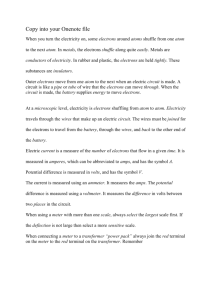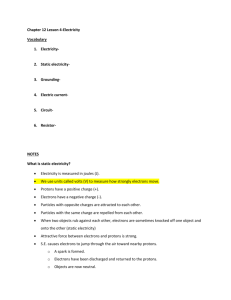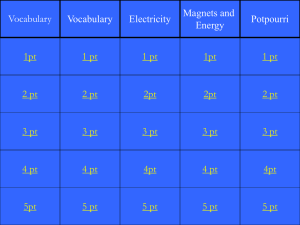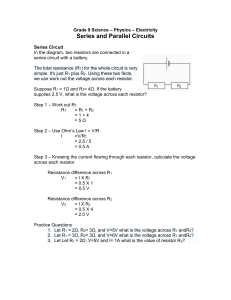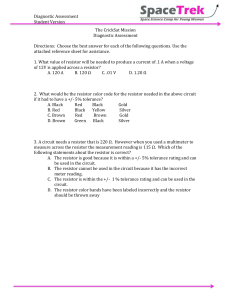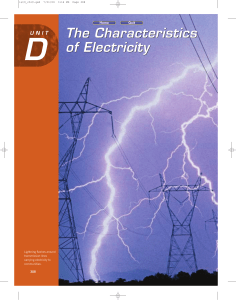Study Guide Electricity and Magnetism 2015
advertisement
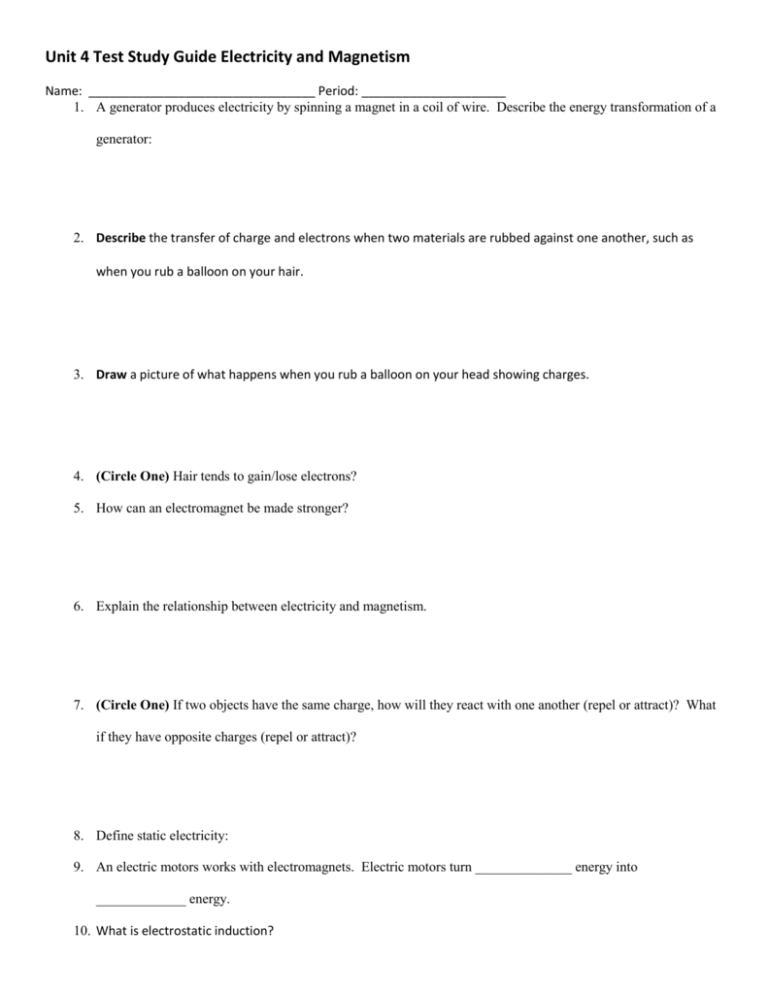
Unit 4 Test Study Guide Electricity and Magnetism Name: _________________________________ Period: _____________________ 1. A generator produces electricity by spinning a magnet in a coil of wire. Describe the energy transformation of a generator: 2. Describe the transfer of charge and electrons when two materials are rubbed against one another, such as when you rub a balloon on your hair. 3. Draw a picture of what happens when you rub a balloon on your head showing charges. 4. (Circle One) Hair tends to gain/lose electrons? 5. How can an electromagnet be made stronger? 6. Explain the relationship between electricity and magnetism. 7. (Circle One) If two objects have the same charge, how will they react with one another (repel or attract)? What if they have opposite charges (repel or attract)? 8. Define static electricity: 9. An electric motors works with electromagnets. Electric motors turn ______________ energy into _____________ energy. 10. What is electrostatic induction? Unit 4 Test Study Guide Electricity and Magnetism Name: _________________________________ Period: _____________________ 11. When electric current encounters a resistor like a light bulb, what is some of the electrical energy transferred to? 12. Draw the electromagnet you made in class below. Draw the magnetic field and show where the fields are the strongest. 13. Which would be a better insulator: copper, silver, or plastic? 14. Which is the best conductor and why: copper, aluminum or plastic? 15. Which would have the highest resistance to flow of electric current: copper, wood, aluminum? 16. Why does a plastic coating on wires make the wires safer to touch when current is flowing through the wires? 17. What end of a battery do electrons flow from? 18. What was the purpose of building a compass in class and putting a coil of wire near it that was hooked up to a battery? What did you show by doing this? 19. What is an example of a resistor? 20. What is the purpose of a resistor? 21. Why are resistors important in our everyday lives? 22. Copper is a better conductor than aluminum but aluminum is used on power lines outside. Why do you think aluminum is used? 23. What was the point of rubbing the magnet on the needle before putting it on the Styrofoam? 24. Why did the needle point North-South once put on the Styrofoam of your homemade compass? 25. Why did the water move when you put the negatively charged balloon near the stream of water? Unit 4 Test Study Guide Electricity and Magnetism Name: _________________________________ Period: _____________________ 26. What is the term used to explain how the paper was picked up by the charged balloon? 27. Why does Earth have a magnetic field? (It has to do with what the Earth’s interior is like) 28. Draw a model of an atom below and label the protons, neutrons and electrons. 29. What do electrons have to do with electricity? 30. Which way do electrons flow out of a battery? 31. Know: Electrostatic induction caused the water to move when you put a balloon near it. 32. Know: Difference between a conductor and insulator. 33. Know: What electric discharge is. 34. Know: Energy transformation of a dam. 35. Explain what is going on in the picture to the right: 36. Explain what is happening in the picture to the right: Unit 4 Test Study Guide Electricity and Magnetism Name: _________________________________ Period: _____________________ 37. You demonstrated lighting with the cloth, aluminum pie chart and Styrofoam setup in class. Explain simply how lightning occurs: 38. What is the scientific term for when charges even out by transferring electrons (like lighting)? Understand how to find resistance in parallel or series circuits and plug that into the Ohm’s Law equation (V=IR) to find current or resistance. The worksheet titled “Calculating Resistance in Parallel or Series Circuits” will be very helpful with this. 34. Find the current flowing through a circuit hooked up to a 10 ohm resistor. 35. Find the current flowing through a circuit hooked up to a 12 ohm resistor. 36. Find the current flowing through a circuit hooked up to a 60 ohm resistor. 37. a. Draw a series circuit with three resistors each with 10 ohms of resistance. b. Find the total resistance in the circuit. c. Find the current flowing through the circuit. 38. a. Draw a parallel circuit with three resistors each with 2 ohms of resistance. b. Find the total resistance in the circuit. c. Find the current flowing through the circuit.




